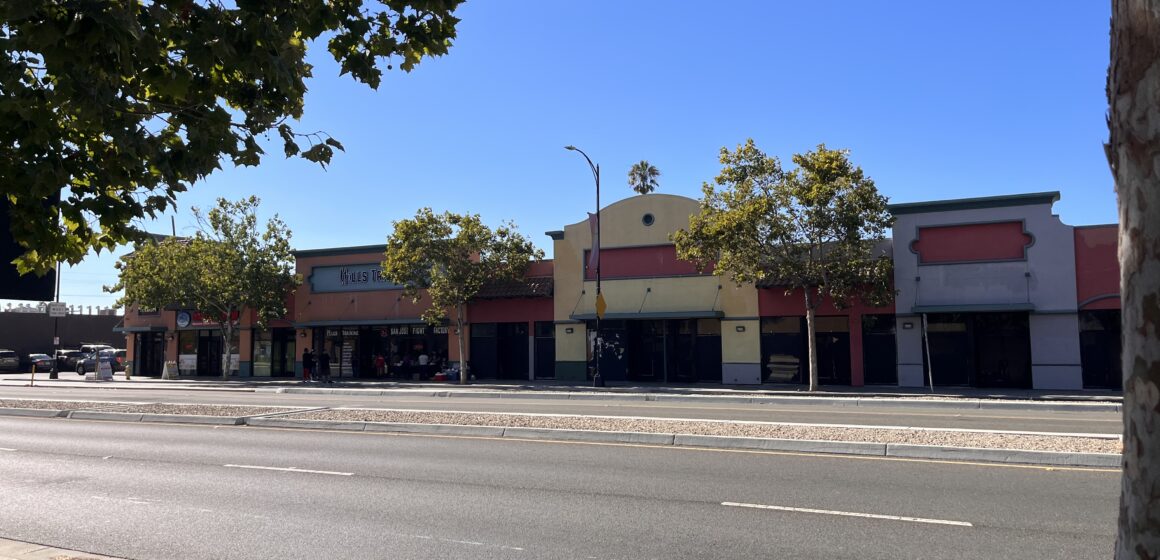Even on vacation—between coastal drives and indulging my 9-year-old’s joy at Disneyland—I can’t stop thinking about Mayfair.
While exploring one of Santa Barbara’s gentrifying neighborhoods, a street sign caught my eye: Sal Si Puedes—Spanish for “get out if you can.” I was stunned. How could such a loaded phrase be casually embedded in the landscape? I did what anyone would do: I Googled it.
It turns out that, like San José’s Mayfair neighborhood, the name Sal Si Puedes was used to describe an area that was once difficult to traverse—physically and socially. It was a name born from hardship, but also a reflection of how outsiders labeled working-class communities of color.
Mayfair, too, was once known as Sal Si Puedes. For those who lived there, the name referred to poor drainage and neglected infrastructure that led to frequent flooding. For outsiders, it became shorthand for danger—a stereotype that reinforced racial bias and justified disinvestment. After all, Mayfair has long been a landing pad for immigrants—predominantly Latino and Vietnamese—who built community in a society where assimilation was often expected, not culture celebrated.
But today, something different is happening in Mayfair.
For generations, residents have taken pride in this neighborhood’s cultural and historical roots. It was once home to César Chávez. It’s where the Mexican Heritage Plaza was built, serving as a vibrant gathering place for creativity and culture. It’s where the Sí Se Puede Collective formed—a coalition of local organizations advancing racial and economic justice. And now, it’s where San José’s first cultural district, La Avenida, is coming to life.
What makes Mayfair’s transformation so powerful is that it isn’t being engineered from the outside. It’s being led from within.
Local residents are organizing, leading, and holding systems accountable. Together, we’ve pushed for tenant preference policies at the city and state levels, fought for access to affordable, high-quality child care, and are designing new models for inclusive development—like affordable housing and social services co-located at the Mexican Heritage Plaza.
We’re not just responding to broken systems—we’re redesigning them.
And nowhere is that more visible than in how we’re governing La Avenida Cultural District.
Rather than consolidating decision-making in one agency, La Avenida is guided by a formal governance board made up of artists, residents, small business owners, neighborhood association leaders, the city of San Jose, the Sí Se Puede Collective, and the School of Arts and Culture at MHP.
This isn’t symbolic—it’s structural. It’s a shared governance model grounded in equity, where those most impacted by public policies help shape them from the start. That’s what self-determination looks like. That’s what authentic community development feels like.
It’s also being recognized. Just a few months ago, San Jose City Council voted to designate Mayfair’s future La Avenida district as an official entertainment zone—right alongside downtown—in preparation for the FIFA World Cup. This wasn’t just a nod to potential economic activity. It was a recognition of Mayfair’s cultural vibrancy and civic power.
Of course, we know that cultural celebration can sometimes precede cultural erasure. But Mayfair is preparing for that, too. We’re using policy tools like Tenant Preference and AB 812 to prioritize residents in new affordable housing. We’re creating economic opportunities for small businesses. And through governance structures rooted in trust and transparency, we’re building in safeguards—so that the people who shaped Mayfair’s story remain central to its future.
That street sign in Santa Barbara reminded me of where Mayfair once was. But it also reminded me how far we’ve come.
We’re no longer a place to “get out if you can.”
We are a place to stay. To thrive. To lead.
And we’re just getting started.
San José Spotlight columnist Jessica Paz-Cedillos is the co-executive director at the Mexican Heritage Plaza. Her columns appear every first Monday of the month. Contact Jessica at [email protected] or follow her on LinkedIn.



Leave a Reply
You must be logged in to post a comment.